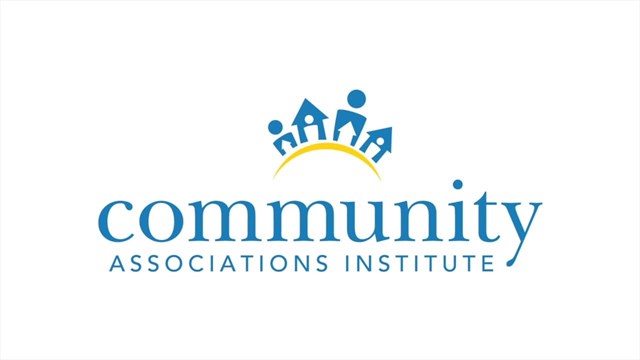Hector and Hedy Johnson bought a new condominium just off Lakeshore Drive in 1995 and lived there for 19 years. In 2014 they sold the apartment to Leonard and Lena Smith. A year later, the condominium association’s board of directors voted to replace the building’s roof and imposed a special assessment to pay for the project. “That’s not fair,” the Smiths complained, insisting that they shouldn’t have to pay the full assessment to replace a roof that sheltered the Johnsons for 95 percent of its life.
It wasn’t fair—but major components and systems don’t last forever, and big assessments are what happens when a board doesn’t set aside funds on a regular basis to update those components and systems.
“The number one mistake a board can make is characterizing such things as future expenses,” says Robert Nordlund, founder and CEO of Association Reserves, Inc., a Calabasas, California-based, reserve study firm with clients in every state.
“It’s human nature to worry about future things at a future time,” he explains, “but if you characterize reserve expenses as offsetting ongoing deterioration, the future takes care of itself. Associations that don’t pay this ongoing bill doom themselves to deferred maintenance, special assessments, and declining property values.”
What Deserves Reserves
Nordlund says that for an item to warrant reserve funding, it must be a common area maintenance responsibility, exceed a minimum threshold cost, and have a limited and predictable useful life.
Michelle Baldry, PE, RS, PRA, a regional director of client services for Milwaukee-based Reserve Advisors, agrees, adding that “Roofs, decks, balconies, interior finishes, pools, pavement, playgrounds—those are all standard items. But no two properties are the same, so it’s really important to get out to the site and see what the association maintains. The way we determine if it’s a reserve component is generally based on cost; a rule of thumb is 1% of the operating budget—so with a million-dollar budget, anything over $10,000 should probably be considered a reserve expense. But,” she cautions, “it really depends on the property.”
In addition to roofs, long-lived common assets that may meet that criteria include masonry walls (which may need concrete restoration or repointing to renew the mortar between bricks); boilers, cooling towers, and other parts of a building’s climate-control system; elevators; the fire-alarm system; interior décor in common areas such as administrative offices, hallways, lobbies, and recreation rooms; sidewalks, streets, parking lots, and garages; balconies and decks; and swimming pool surfaces, pump motors, and filtration systems.
In cooperatives, the building’s underlying mortgage should be a reserve item, too, says Annette Murray, a certified public accountant and a shareholder with Wilkin & Guttenplan, PC, an accounting firm in New York City and East Brunswick, New Jersey.
“The board needs to monitor and plan for a mortgage, especially when it’s coming up to be refinanced a couple of years ahead,” she says. “Many co-ops pay interest only and just keep refinancing the same dollar amount. If they need more money, they increase their mortgage. A best practice would be to have a mortgage that amortizes, paying interest and principal.”
Knowing the Score
In most jurisdictions, common-interest associations conduct a reserve study—a budgeting tool that assigns an approximate useful life to each major building component, estimates its replacement cost, and sets aside funds each year so replacement funds will be adequate when replacement time comes.
The study is performed by an engineer or architect who has obtained either the Community Associations Institute (CAI)’s Reserve Specialist (RS) designation or the Professional Reserve Analyst (PRA) designation given by the Association of Professional Reserve Analysts (APRA), and is usually done in two parts, says Baldry; A physical study identifies all common area components, assesses the conditions of the components and equipment, estimates the remaining life of these components and estimates their replacement cost. The financial analysis examines the status of current reserves, maps out a funding plan and identifies funding goals. A study will generally take a 30-year outlook, since components like roofs may have life spans in that range.
Associations update their reserve study annually or every few years to account for inflation and product enhancements. “Reserve studies should prepare the association for material and technical upgrades such as new pool surfaces and more efficient elevators and boilers. You buy the new appropriate thing, not a like-for-like replacement,” Nordlund says.
Many states require reserves, and some even specify the minimum acceptable percentage of the budget that an association must set aside in reserve. However, in some markets—the Chicagoland area being one major example—no such requirement exists, and consequently many associations do nothing. “Although it is a great tool to assist the board in making decisions regarding the maintenance and expenditures of the community, the Illinois Condominium Property Act does not state a specific dollar amount that a community needs to set aside for reserves,” says Joseph Baez, chief executive officer of Advanced Property Specialists, Inc. in Tinley Park.
Some boards opt to do a less formal (and less expensive) ‘capital needs assessment’ to get an idea of how to budget for upcoming work. A capital needs assessment might be done by a manager or a building’s own engineer, and spells out what equipment or physical elements will need replacement within the next five or six years. It also estimates how much that will likely cost but unlike a reserve study, it doesn’t set up a funding plan. This assessment operates on the assumption that the board has—or will get—the money, either from savings, a special assessment, or a loan. says Mitchell H. Frumkin, president of Kipcon Inc., an engineering consulting firm based in North Brunswick, New Jersey. He served in 2002 as president of the Community Associations Institute (CAI), a national membership organization for common-interest residential communities.
While a capital needs assessment can certainly be useful, says Baez, “The most effective way of achieving a sound funding plan is through the results of a reserve study.” Baldry agrees. “It’s good to have an independent opinion,” she says. “Often, if you do an internal study, you’re relying on vendors who have a vested interest.” And, she notes, there are a number of “hidden” components that non-professionals might not think of, such as common pipes and electrical systems.
Another reason many boards are beginning to embrace reserve studies even when they’re not mandatory is to make people buying into their buildings eligible for Federal Housing Administration (FHA) financing. To qualify a building, its board must set aside 10 percent of the budget as a reserve, or present a reserve study less than two years old that states what should be set aside. A typical reserve study set-aside increases the annual budget by a half percent to one percent, Nordlund says. Thus, buildings that rely on the FHA reserve percentage requirement will collect significant excess reserves, while their owners pay monthly assessments well above the funding needs of an individual reserve study for their building.
The Right Team
A reserve study that yields useful information should be a team effort, beginning with the board and its property manager or management firm. “The manager is the primary communicator between the board and its vendors,” says Matthew Grobert, a senior project manager for The Falcon Group, an engineering firm based in Bridgewater, New Jersey.
“Every association should have a good attorney well-versed in common-community law,” he continues, and because the laws specific to condos, co-ops, and homeowners’ associations vary to some extent, the attorney should have an especially strong background in the type of community the board oversees.
In selecting a professional to perform the reserve study, a board should employ an engineer who is a reserve specialist (RS) and/or a professional reserve analyst (PRA). A board’s own in-house engineer may help with specific property knowledge, but probably won’t have the expertise of a consultant with reserve credentials.
Just as with any vendor or service provider, it’s crucial for community administrators to fully vet the professionals they hire to conduct reserve studies to make certain they are, well, professional. “Some firms doing reserve studies don’t even have a professional engineer on their staff,” Grobert cautions. “They use some other way to gather costs.”
One such secondary source is RSMeans, a large company that compiles and publishes construction-cost data for estimating purposes. “It’s accurate, but not as accurate as actually overseeing the work,” Grobert says. “Using a firm with architects and engineers doing replacements and restorations helps me to perform a very accurate reserve study, because I have up-to-date costs.”
Where the Money Goes...
Once the reserve study is complete, the board and owners must decide on a funding plan based on their tolerance for risk and their willingness to set money aside each month for the reserves.
Some associations strive for full funding, collecting enough money to replace each component at the end of its useful life, without charging residents any additional assessments. In the interim, the stored funds yield interest and serve as an inflation hedge.
One thing that almost all professionals agree on is that you shouldn’t use your reserve fund as a vehicle for aggressive investment. In general, conservative investments like CDs, government bonds and so forth seem to be the better bet. While a 1% gain on a CD may not seem like much, it’s better than a 20% loss if the market tumbles, experts note. Prudent as this sounds, however, many owners balk at the full-funding approach because it increases their monthly assessments.
At the opposite extreme is baseline funding, which reduces annual contributions, eventually dropping the reserves to zero. This strategy lowers the monthly assessments, but pros warn that if a component has to be replaced early, or costs more than expected, a community can find itself in a financial and maintenance bind.
Threshold funding strikes a middle ground between full and baseline funding. “Most associations do threshold,” says one engineer. “They’re maybe 60 percent to 70 percent funded,” and if a big repair or replacement is needed, the budgetary shortfall will be made up with a one-time assessment of all residents.
Regardless of the decided-upon funding level, a building’s accountant or financial advisor should be part of the reserve-study team to help the board decide where to invest the reserves until they are needed. The accountant’s main role is to sort out these capital contributions (which are not taxable and can be carried forward from year to year) from taxable interest on investments.
Whatever investments are selected must be extremely safe, enabling the board to fulfill its fiduciary responsibility, says Abdullah Fersen, CEO of Newgent Management in Yonkers, New York. He says acceptable investments include certificates of deposit, money-market funds, and U.S. Treasury securities—bills, notes, and bonds—with varying degrees of maturity so that investments come due when they’re needed, and don’t incur penalties when funds are needed for a repair or replacement.
Learn More
There are quite a few resources for condo board members and administrators to learn more about how to manage their reserve funds. First, board members should consult their management firm and their CPA. CAI has a chapter in Schaumburg, (www.cai-illinois.org) and the Association of Condominium, Townhouse and Homeowners Associations (ACTHA) routinely holds seminars and educational forums about a variety of legal, financial and managerial topics. And, of course, there’s The Cooperator Expo Chicagoland on Tuesday, November 15 from 10 a.m. to 4:30 p.m. at the Navy Pier Convention Center. A full day of information, networking and educational seminars is planned. Log on to www.chicagocondoexpo.com to register and for more information.
George Leposky is a freelance writer and editor living in Miami, Florida, and is a frequent contributor to The Chicagoland Cooperator.
To learn more about reserve studies, see Reserve Funds: How & Why Community Associations Invest Assets, published by CAI Press, Falls Church, VA,










Leave a Comment